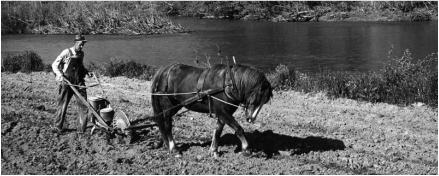The church I now pastor was founded in 1958, and peaked in attendance in 1967.
Six decades of decline followed—with a few plateaus in subsequent years, instances of historical conflict, numerous pastoral transitions and several events that led to departures of members.
When we arrived toward the close of 2012 we found a faithful remnant. As a group they endured many seasons of conflict. They were faithful and worked hard to keep the doors open, giving, serving and praying. They were hopeful but weary and somewhat skeptical but ready to try anything to get the Church headed in the right direction. A church experiencing prolonged seasons of decline is often suffering from locked institutional memory. One symptom of this condition is the strong conviction that a return to core programs and historic strategies will be enough to bring about revitalization and renewal.Often a church needing to be revitalized believes:
- To reach the community—get as many people to come to Church as possible.
- To make more disciples—increase attendance in Sunday School.
- To create great fellowship in the body—re-launch once successful programs, schedule fellowships, get the people together and relationships will simply form.
For a church, institutional memory functions like a well worn path, familiar, comfortable, safe, sure. But, it does not create conditions suited for cultivating new growth.
In order for new Gospel seeds to take root—the hard ground must be plowed, broken up and turned over. Plowing is long, hard, dirty and unpopular work. No one gets excited about plowing—but without it, there will be no possibility of new growth.What does the work of “plowing” look like in a Church RePlant ?
- The Cessation of the “Well Worn”: whether it’s a program, a service time, a favorite fellowship, the style of music or what is communicated in the bulletin—plowing breaks up what was in order to do what’s next. In seeking to find what’s next—the congregation, Pastor and leaders must pray and plan together, relying on God to lead the way.
- The introduction of a disruptive force: as a plow breaks into the ground it cuts, separates, lifts and turns over. Hard ground is transformed more and more into soft earth as the steel edge of the plow repetitively breaks into the ground. God’s word regularly and rightly proclaimed while empowered by the Holy Spirit, is the disruptive force that breaks into the hearts of people. Alone you cannot work to soften hard ground and hard hearts. The Word of God proclaimed in the power of the Spirit will serve to disrupt and dislodge the hard ground covering fertile soil.
- Persistent Plodding: The hard places won’t be softened with one message, one prayer, or one strategic action list. Plowing is backbreaking row by row on repeat.
- A Christ Centered Commitment: Jesus admonished his followers by saying that anyone who put their hand to the plow and then quit—is not worthy of his kingdom. Revitalization and Replanting Pastors know that turnarounds are never short—many experts believe it takes between 5-7 years for a once in decline or nearly dead church to come back to life. Stay in the work Pastor—the breakthrough is on the way!
Plowing isn’t popular, it won’t make you famous, or win you approval and applause. But plowing is absolutely necessary if there is to ever be a harvest.
What are the stages in Replanting a Church? Go here for an overview.
Published December 16, 2021




